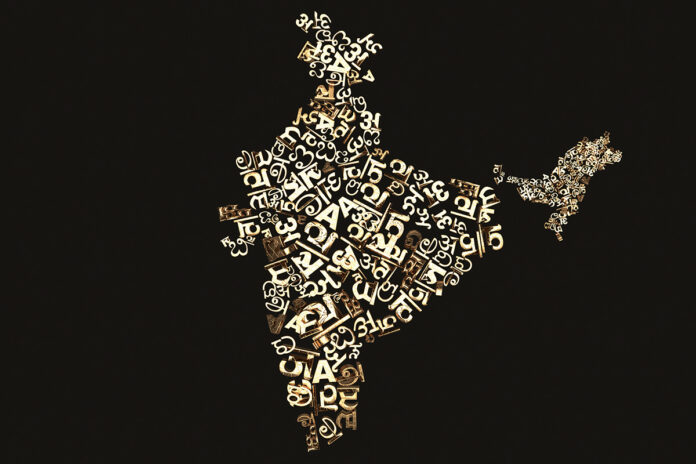Leapfrogging the language barrier holds the key to supercharging India’s digital banking journey
Words by Karan Karayi
Across the world, we have witnessed the power and potential of digital to transform industries and usher in a wave of change. Closer to home, and particularly when it comes to driving financial inclusion, we have seen the government and financial institutions piggyback on its transformative potential to bring a slew of financial services to the fingertips of Indians everywhere.
Prime Minister Narendra Modi has recognised the importance of a progressive banking system in driving economic growth. While the country has made significant strides in promoting digital banking services, there are still challenges to overcome, particularly in bridging the language gap and ensuring access for marginalised communities.
The Digital Divide and Financial Inclusion

India is a diverse country with a rich linguistic landscape. With 22 separate official languages, 122 other languages, and 270 mother tongues, it is little wonder that hurdling the language barrier represents a significant obstacle to achieving digital financial inclusion.
According to the Digital Divide: India Inequality Report 2022, there is a stark disparity in digital payment adoption between the richest and poorest segments of the population. The report also highlights the limited access to formal financial services for marginalised communities, such as the scheduled castes, scheduled tribes, and backward classes.
To address this divide, it is crucial to not only promote financial literacy, but also communicate with customers in their native language. Localising banking services in a multilingual country like India requires a scalable language technology solution that can cater to every Indian language while considering cultural and linguistic nuances.
The likelihood of a digital payment by the richest 60% is 4 times more than the poorest 40% in India.
The Importance of Language Localisation

Language localisation goes beyond simple translation. It involves adapting content to suit the linguistic and cultural preferences of the target audience. In the context of digital financial inclusion, language localisation plays a vital role in building trust and encouraging adoption among diverse communities.
For instance, the Reserve Bank of India (RBI) has recognized the need to provide banking services in multiple languages. In 2015, the RBI mandated that banks offer printed materials in at least three languages, including Hindi, English, and a regional language. However, as of 2022, only nine public sector banks have complied with this requirement, indicating the need for further efforts in language localisation.
Challenges in Achieving Language Localisation

Efficient language localisation in the banking sector comes with its own set of challenges. One of the key obstacles is the lack of comprehensive language support across digital platforms. While some banks may offer services in one or two additional languages, this limited approach fails to cater to the diverse linguistic needs of the population.
Additionally, there is a need for customized financial products that align with the unique requirements of different economic activities. Tailoring products based on an individual’s digital footprint and economic activity can enhance their financial experience and encourage greater adoption of digital financial services.
The Role of Technology in Language Localisation
Technology plays a crucial role in enabling effective language localisation. Artificial Intelligence (AI) and Natural Language Processing (NLP) can be leveraged to develop language technology solutions that automate the translation and localisation process. These solutions should not only focus on linguistic accuracy, but also consider cultural nuances to ensure a seamless user experience.
Collaborations between financial institutions, technology companies, and academic institutions can further drive innovation in language localisation. For example, the RBI has partnered with IIT Madras to develop a multilingual voice banking solution to assist visually impaired and illiterate individuals. This initiative aims to eliminate the language barrier and promote digital financial inclusion for millions of Indians.
Empowering Marginalized Communities

Digital financial inclusion should prioritize the empowerment of marginalized communities, including women and rural populations. Women in India face unique challenges in accessing financial services, and language localisation can play a crucial role in addressing these barriers. Collaborative efforts between financial institutions and providers can result in the creation of tailored products and processes that enable easy access to savings, payments, and credit for women.
Similarly, rural communities, which contribute significantly to India’s GDP, can benefit from digital, secure, and cashless banking services in their local language. Providing support and encouragement to rural customers through localised online platforms, vernacular ads, AI-powered guidance tools, and chatbots can help build trust and facilitate their digital financial journey.
Policy Innovation and Collaboration

Achieving effective language localisation requires proactive collaboration between regulators, governments, and industry stakeholders. Policymakers must understand the needs of the industry and create an enabling environment for innovation. This includes promoting policies that encourage language localisation, supporting the development of language technology solutions, and fostering public-private partnerships.
The Reserve Bank Innovation Hub (RBIH) in India is playing a crucial role in driving policy innovation. By bringing together academics, bankers, fintechs, and regulators, RBIH explores how India’s digital tools can address financial inclusion challenges. Through incubation and collaboration, RBIH is developing solutions that cater to the specific needs of different customer segments.
The Way Forward
Language localisation is a critical factor in achieving digital financial inclusion in India. It requires a comprehensive approach that goes beyond translation to adapt content based on linguistic and cultural preferences. By leveraging technology, fostering collaboration, and implementing supportive policies, India can bridge the language gap and empower all segments of society to participate in the digital economy.
As India continues its journey towards digital financial inclusion, language localisation will remain a key innovation frontier. By ensuring that every Indian has access to frictionless finance in their preferred language, the country can unlock the full potential of its diverse population and drive inclusive economic growth.


